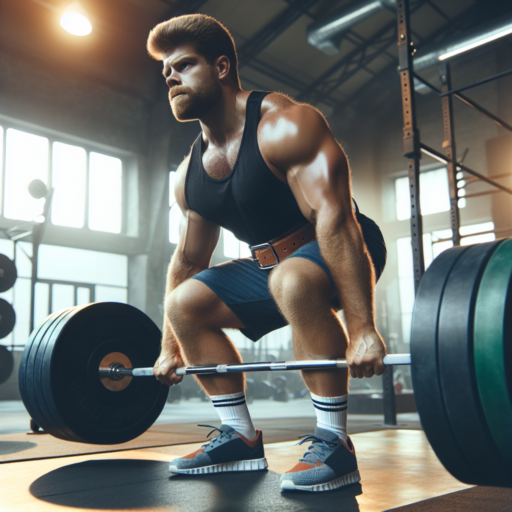What is a Foot Clip and Its Importance
A foot clip, often utilized in the realm of cycling, is a device designed to secure a rider’s foot to the pedal, enhancing the cyclist’s control and efficiency during their ride. Originally, these devices emerged as simple toe clips, which wrapped around the shoe, allowing for a tighter connection between the foot and the pedal. This basic concept has evolved, fostering advancements in design and functionality, leading to more sophisticated systems that cater to a variety of cycling disciplines.
The importance of foot clips cannot be overstated, as they play a pivotal role in maximizing the cyclist’s power transfer from leg movement to pedal stroke. By securing the foot in place, cyclists can exert force during both the upstroke and downstroke, leading to a more efficient use of energy and an increase in speed. Moreover, foot clips ensure that the foot remains in the optimal position on the pedal, mitigating the risk of slips and injuries, thus providing a safer and more secure cycling experience.
Interestingly, the use of foot clips has transcended beyond the competitive arenas, becoming a staple for recreational cyclists and commuters alike. Their adoption across various cycling segments underscores the universal acknowledgment of their benefits, from enhancing performance to ensuring safety. As cycling continues to grow in popularity, the demand for innovative foot clip solutions rises, pushing the industry to develop more ergonomic and accessible options for a diverse range of cyclists.
No se han encontrado productos.
The Different Types of Foot Clips Available on the Market
Foot clips, also known as toe cages or clipless pedal systems, are essential accessories for avid cyclists, providing a secure connection between the rider’s foot and the pedal. This connection enhances pedaling efficiency and bike control, making them a popular choice among both recreational riders and competitive cyclists. With advancements in design and technology, the market now offers a variety of foot clips, catering to different preferences and riding styles.
Platform Adapter Clips
Designed for casual riders and urban commuters, platform adapter clips are the simplest form of foot clips. These clips attach to standard platform pedals, transforming them into a more secure footing without the need for specialized shoes. This type allows for quick engagement and disengagement, perfect for city riders who frequently stop and start.
Road Bike Clips
Road bike clips are designed for high performance and efficiency. They offer a tighter fit compared to platform adapter clips, ensuring minimum foot movement during intense riding sessions. These clips typically require cycling-specific shoes with cleats that lock into the clip mechanism, providing optimal power transfer and speed.
Mountain Bike Clips
Mountain bike clips are engineered for durability and ease of use in off-road conditions. These clips often feature a two-sided design for easier entry, and they accommodate a wider range of shoes. Unlike road bike clips, mountain bike clips offer a bit more float (lateral movement), which is crucial for maneuvering on challenging terrains.
How to Use a Foot Clip for Optimal Performance
Utilizing a foot clip properly can significantly enhance your cycling experience, offering both increased efficiency and comfort. Foot clips, also known as toe clips, bind your foot to the pedal, allowing for a more forceful and controlled pedal stroke. This guide will walk you through the essential steps to ensure you’re getting the most out of your foot clips.
Adjusting Your Foot Clips for a Perfect Fit
First and foremost, the fit of your foot clip is crucial for optimal performance. Ensure that the foot clip is snug but not overly tight around your shoe. You should be able to slide your foot in and out without much resistance while still feeling secure. Adjusting the straps to achieve this balance is key, as a proper fit reduces the risk of foot numbness and increases efficiency in your pedaling.
Mastering the Technique of Using Foot Clips
Getting accustomed to using foot clips takes a bit of practice, especially if you’re transitioning from clipless pedals or traditional flat pedals. Start by practicing on a stationary bike or in an open, flat area where you can safely stop if needed. Focus on the motion of sliding your foot forward and then down into the clip, securing it firmly before starting to pedal. Remember, the downward stroke is as important as the upward pull, ensuring you’re utilizing the full range of motion for optimal power transfer.
Understanding and implementing these steps will significantly improve your cycling efficiency and comfort. Ensuring your foot clips are properly adjusted and mastering the technique of using them will empower you to ride longer, faster, and with more control.
Benefits of Using a Foot Clip in Daily Life and Sports
Integrating a foot clip into your daily routine and sports activities can significantly enhance your overall performance and comfort. These simple yet effective devices offer a myriad of benefits tailored to support your feet, whether you’re navigating your day-to-day activities or engaging in rigorous sports. Let’s explore some of these advantages.
Improved Stability and Support
One of the primary benefits of using a foot clip is the improved stability and support it provides. By securely fastening your feet to the pedals of a bicycle, for instance, foot clips help in distributing your weight more evenly. This not only improves your balance but also increases the efficiency of your pedaling, making every ride smoother and less strenuous.
Enhanced Safety
Incorporating foot clips into your daily and sports footwear also significantly boosts your safety. By preventing your feet from slipping off pedals or shifting unexpectedly, these clips function as a safeguard against potential accidents or injuries. This aspect is especially crucial when cycling on slippery surfaces or performing high-intensity actions in sports activities.
Better Energy Utilization
Lastly, foot clips aid in better energy utilization by promoting an efficient pedaling technique. They allow for a more effective power transfer from your legs to the pedals, ensuring that none of your efforts go to waste. Whether you are cycling uphill or sprinting, foot clips ensure that every motion contributes towards your forward momentum, leading to improved performance and reduced fatigue.
Step-by-Step Guide to Installing Your Foot Clip Correctly
Installing foot clips on your bicycle not only enhances your pedaling efficiency but also boosts your safety while cycling. Whether you’re a seasoned cyclist or a newbie to the biking community, following a meticulous step-by-step process ensures your foot clips are installed correctly and securely. This guide aims to walk you through the essentials of foot clip installation, ensuring you’re back on the track with confidence and improved pedal power.
Step 1: Gather Your Tools and Components
Before diving into the installation process, ensure you have all necessary tools and components on hand. Typically, you’ll need a set of Allen keys or a flat-head screwdriver, depending on your bike’s pedal design. Ensure your foot clips and straps are compatible with your pedals for a seamless installation. Remember, the right tools and components not only make the installation process smoother but also prevent damage to your gear.
Step 2: Attach the Foot Clip to the Pedal
Start by positioning the foot clip over the pedal to ensure it aligns correctly. Most foot clips have holes that match up with threading on the pedal, making it easy to place the bolts. Secure the clip to the pedal using your Allen keys or flat-head screwdriver, tightening the bolts so they’re snug but not overly tight. It’s crucial to ensure that the clips are firmly attached but also able to be adjusted as needed.
Step 3: Adjust the Strap Length
Once the foot clip is attached to the pedal, thread the strap through the slots on the clip. Pull the strap to a snug fit around the ball of your foot, ensuring it’s tight enough to hold your foot securely but not so tight as to impede circulation. This adjustment is key to providing the right balance of security and comfort while pedaling. Remember, the ideal strap length is crucial for maximizing both pedal efficiency and comfort during your rides.
Foot Clip Maintenance: Tips and Tricks for Longevity
Maintaining your foot clips is essential for ensuring the longevity of your cycling equipment and enhancing your riding experience. Regular upkeep not only prevents unexpected malfunctions but also contributes to a smoother pedal stroke. By adopting simple yet effective maintenance routines, you can significantly extend the life of your foot clips. Below are key tips and tricks to keep your foot clips in top condition.
Regular Cleaning
One of the simplest, yet most overlooked aspects of foot clip maintenance is regular cleaning. Dust, mud, and grit can accumulate over time, causing increased wear and potentially hindering the clip mechanism’s functionality. A routine cleaning with soapy water and a soft brush can remove debris that might cause damage. Make sure to dry the clips thoroughly to prevent rust and corrosion, especially if your clips are made of metal.
Checking for Wear and Tear
Periodic inspection of your foot clips for signs of wear and tear is crucial. Look for any cracks, excessive wear, or damage to the retention system. Early identification of these issues can prevent accidents and costly replacements in the future. If any part of your foot clip is significantly worn or damaged, it’s wise to replace it promptly to ensure your safety and the integrity of your ride.
By integrating these tips and tricks into your maintenance routine, you can significantly increase the durability and functionality of your foot clips. Simple actions like cleaning and regular inspections can profoundly impact the longevity of your cycling gear, letting you focus on the joy of the ride.
Common Mistakes to Avoid When Using a Foot Clip
When it comes to utilizing a foot clip for cycling or any fitness activity, ensuring proper usage is crucial for safety and efficiency. Many enthusiasts, from beginners to the more experienced, sometimes overlook the significance of avoiding certain pitfalls. These common mistakes can impact not only your performance but also increase the risk of injury. Here, we delve into the frequently encountered errors and how to steer clear of them.
Ignoring the Importance of Proper Adjustment
One of the most significant missteps is not properly adjusting the foot clip to fit your shoe size. A foot clip that is too loose or too tight can lead to a myriad of issues including decreased pedal efficiency, discomfort, and even accidents. Ensure that the clip is snug but not constrictive, allowing for a small amount of wiggle room for your foot to naturally adjust during your cycling motion.
Neglecting to Regularly Check for Wear and Tear
Regular maintenance is often overlooked by many riders. Failure to inspect your foot clips for wear and tear can lead to unexpected malfunctions during use. Signs of wear such as cracks, looseness, or unusual wear patterns on your clips or cleats should be addressed promptly to prevent any accidents or injuries while riding.
By being aware of these common mistakes and taking the necessary precautions, users can enhance their cycling experience and maintain safety. Remember, taking a few moments to ensure your foot clip is properly adjusted and in good condition can make a significant difference in your riding performance and overall comfort.
How to Choose the Right Foot Clip for Your Needs
Choosing the right foot clip can significantly impact your cycling performance and comfort. With various options available in the market, it’s crucial to consider your riding style, shoe compatibility, and personal preferences. In this guide, we’ll help you understand the key factors to keep in mind to make an informed decision.
Consider Your Cycling Discipline
The type of cycling you engage in greatly influences the kind of foot clip that’s best for you. For instance, road cyclists often prefer lightweight and aerodynamic clips for efficiency, whereas mountain bikers might opt for more durable and secure clips to handle rough terrains. Assess your cycling habits and choose a foot clip that complements your specific discipline.
Compatibility and Comfort
Ensuring that your foot clips are compatible with your cycling shoes is paramount. Check the cleat system of your shoes and match it with the foot clip for a seamless fit. Moreover, comfort should never be overlooked. Look for foot clips that offer adjustable tension and easy entry/release mechanisms to enhance your riding experience without compromising on safety.
Remember, the right foot clip not only improves your cycling efficiency but also prevents injuries by ensuring a stable and secure connection with your bike. Take the time to explore different brands and models, and don’t hesitate to seek advice from more experienced cyclists or professionals at your local bike shop.
User Reviews: The Best Foot Clips According to Consumer Feedback
The voices of consumers have always been a pivotal factor in guiding potential buyers towards the best purchases, especially when it comes to foot clips. These small but essential accessories for cyclists, runners, and even casual gym-goers have seen various innovations and iterations. But which ones truly stand out in the eyes of the user community?
According to numerous online forums and product review sites, there’s a clear trend that suggests comfort and functionality are the leading factors driving user satisfaction. Durability also plays a crucial role, as foot clips are put through rigorous use across different terrains and weather conditions. Consumers have highlighted several brands that consistently receive high praise for meeting these criteria, presenting a mix of established names and emerging challengers in the market.
One standout aspect of the feedback is the discussion around easy installation and compatibility with a wide range of footwear. Users are not just looking for foot clips that can survive the test of time but also those that can be seamlessly integrated into their existing gear without the need for professional assistance or specialized tools. This convenience factor, coupled with the ability to switch between different shoes, speaks volumes about the evolving expectations of consumers.
FAQs: Answering Your Most Common Questions About Foot Clips
Certainly! Below is the content structured to align with SEO strategies focusing on the topic given:
When it comes to enhancing your cycling performance or ensuring your safety while biking, foot clips are a subject of much discussion and interest. This section aims to address the most frequent questions enthusiasts and beginners have regarding foot clips. Whether you’re considering purchasing your first pair or you’re curious about their benefits, you’ve come to the right place.
What Are the Advantages of Using Foot Clips?
Foot clips offer several key benefits to cyclists, ranging from improved pedaling efficiency to increased safety. By securely attaching your feet to the pedals, they ensure that you’re making the most out of each pedal stroke. This not only enhances your speed but also reduces the risk of your feet slipping off pedals during rides, which can lead to accidents.
Are There Different Types of Foot Clips?
Yes, foot clips come in various designs to suit different types of bicycles and riding preferences. Traditional toe clip pedals, which feature a cage and strap system, are widely used for their simplicity and effectiveness. Meanwhile, clipless pedal systems, which lock a cleat on the bottom of the shoe to the pedal, offer a higher level of performance and have become the preferred choice for many competitive cyclists. Understanding the distinctions between these types can help you select the perfect pair for your biking needs.




